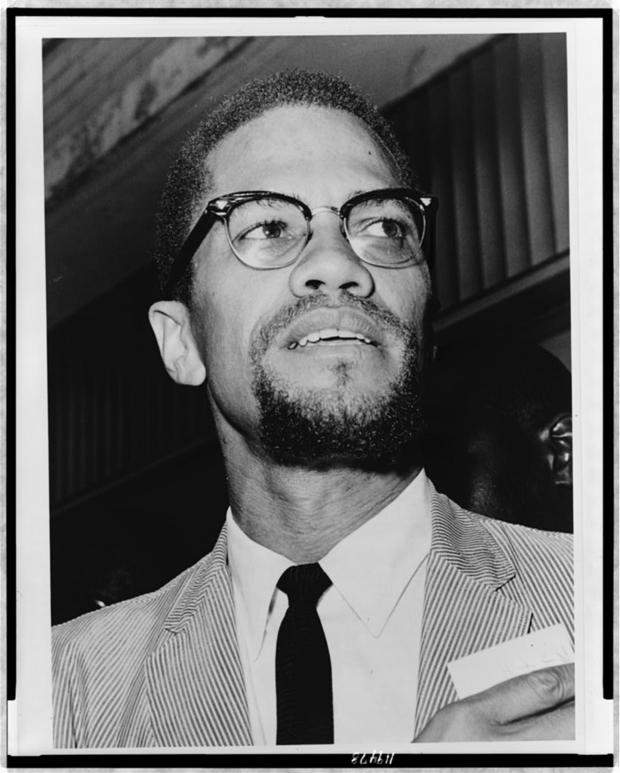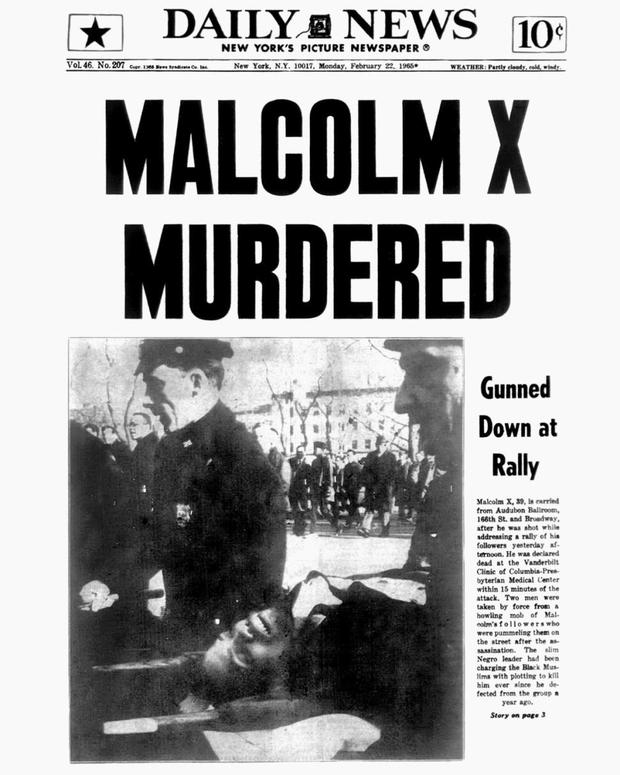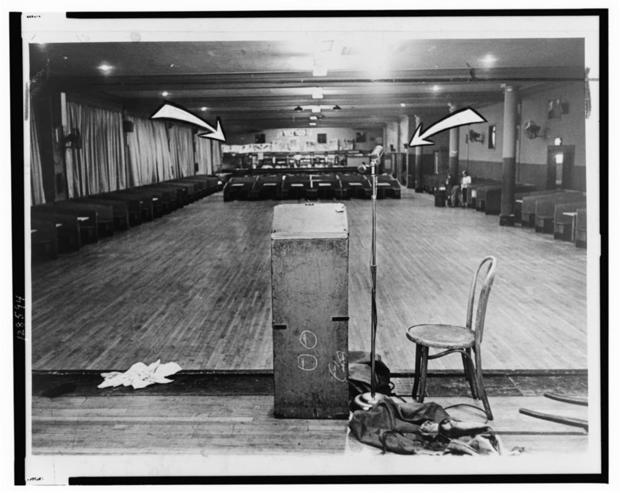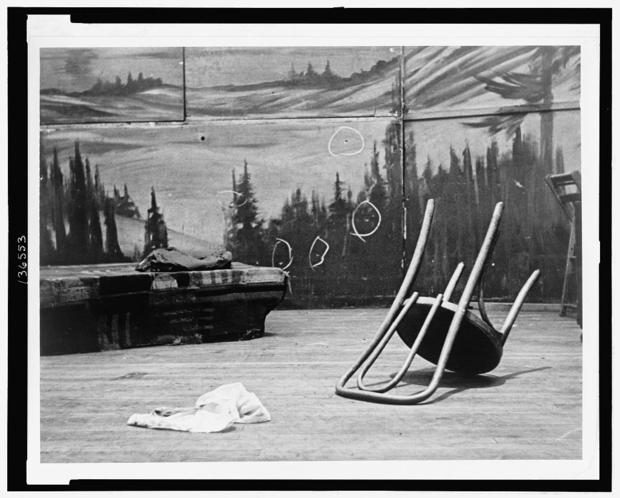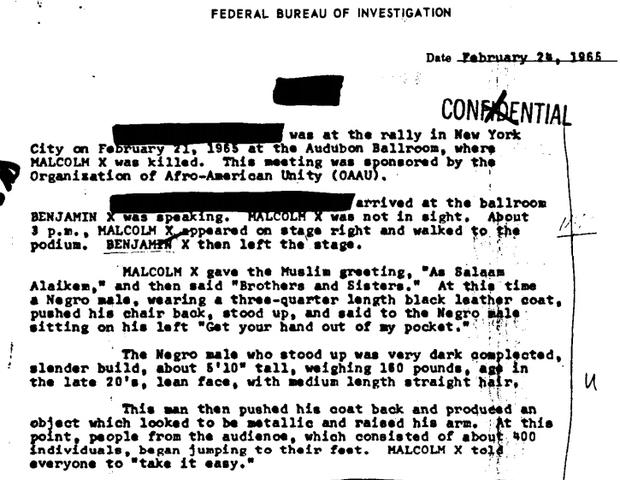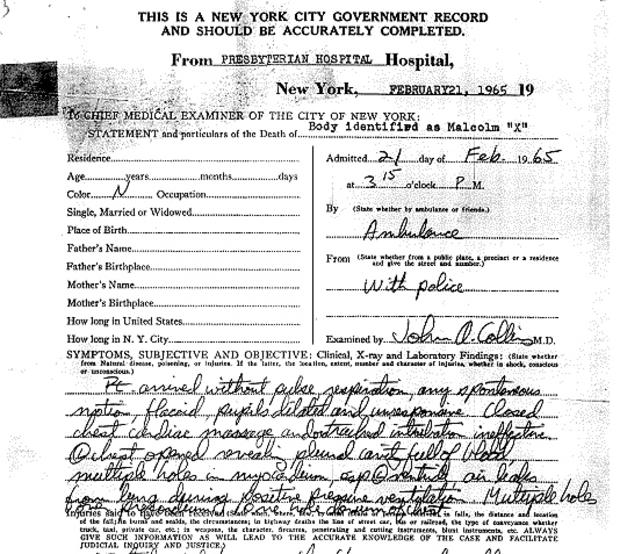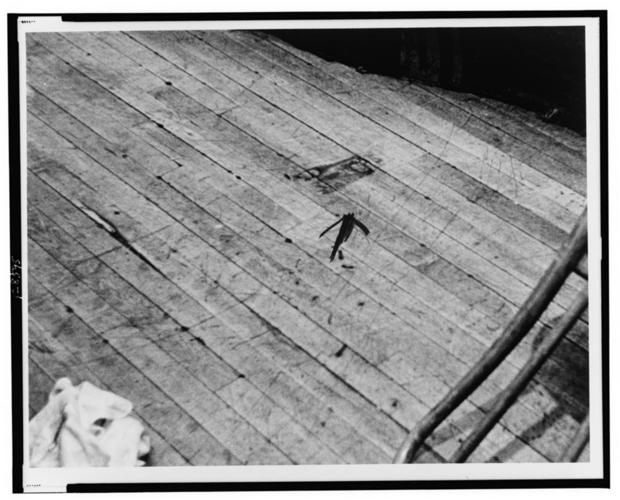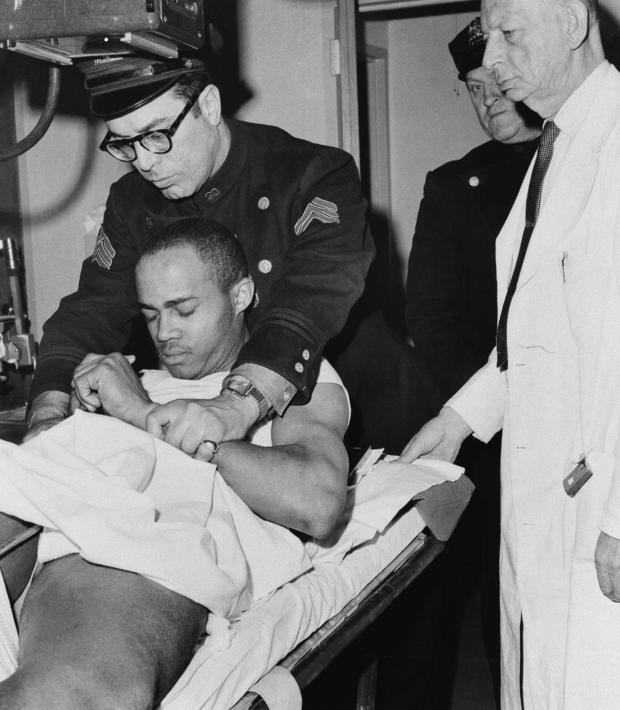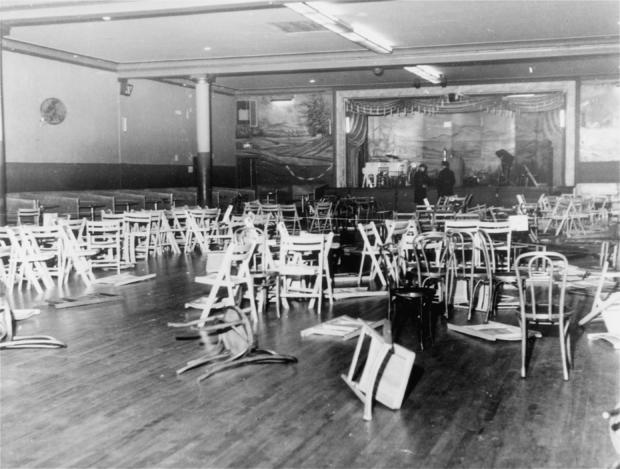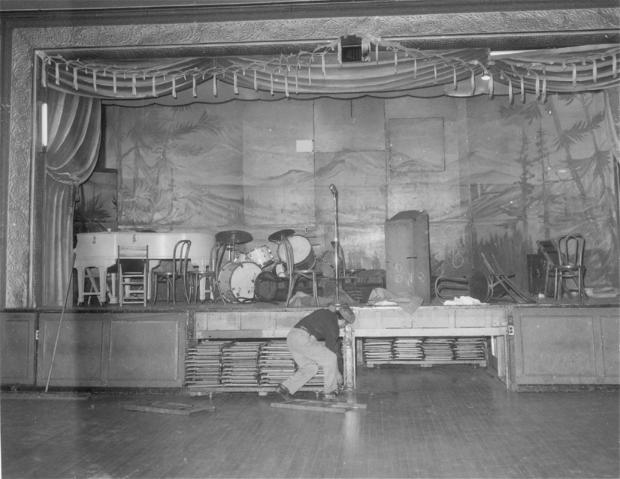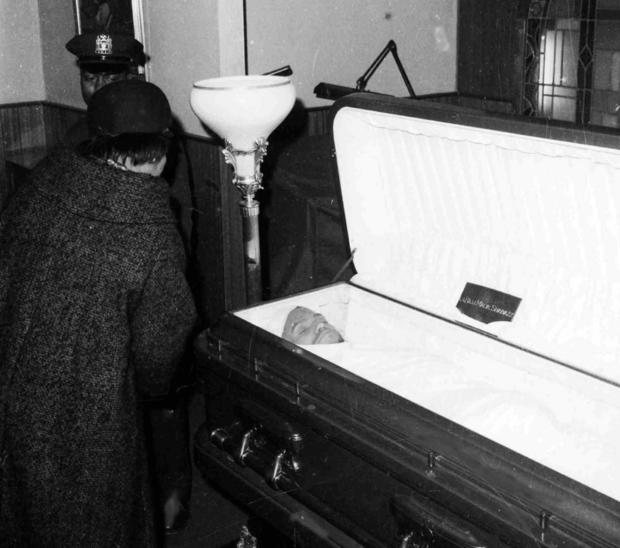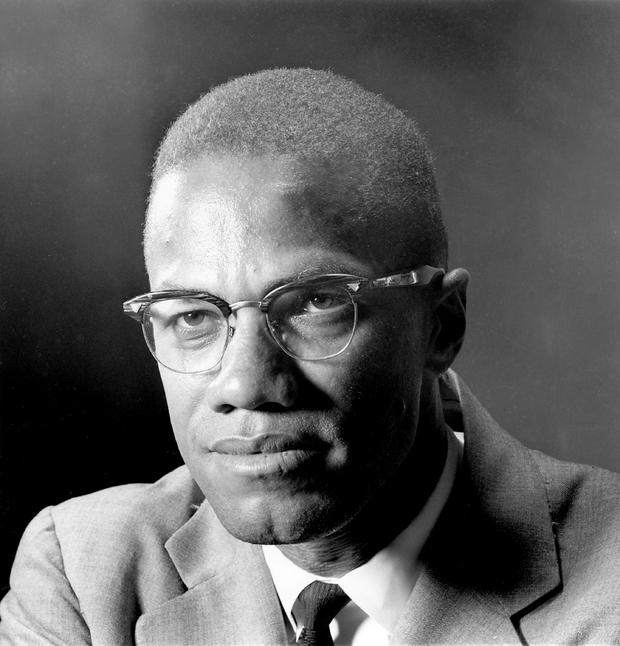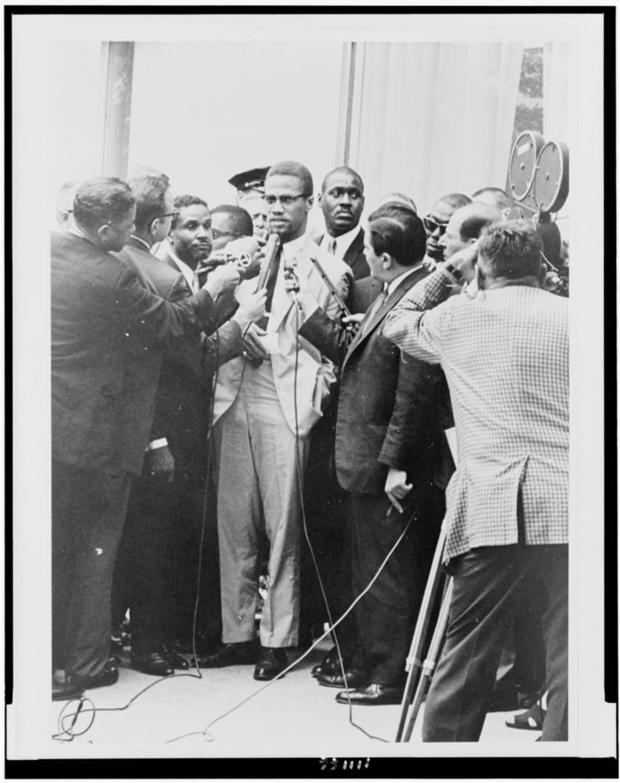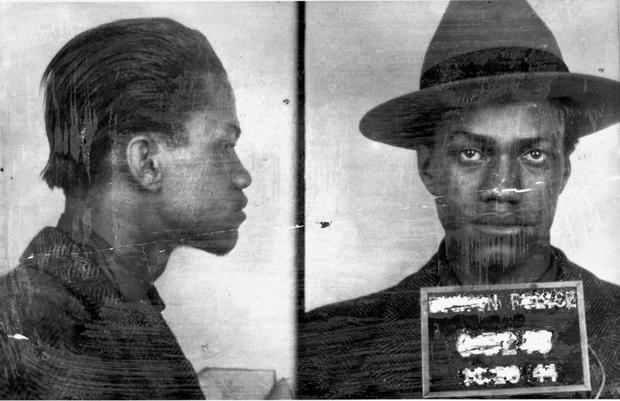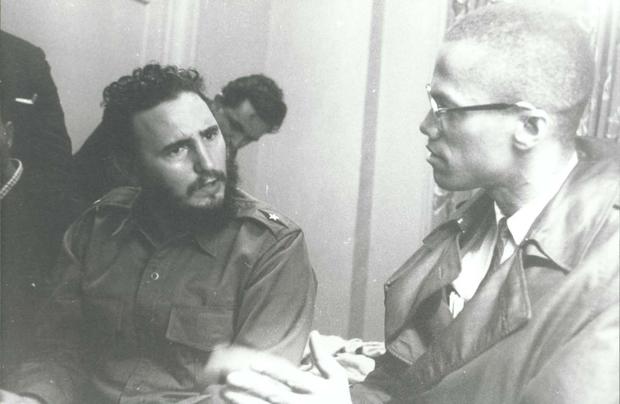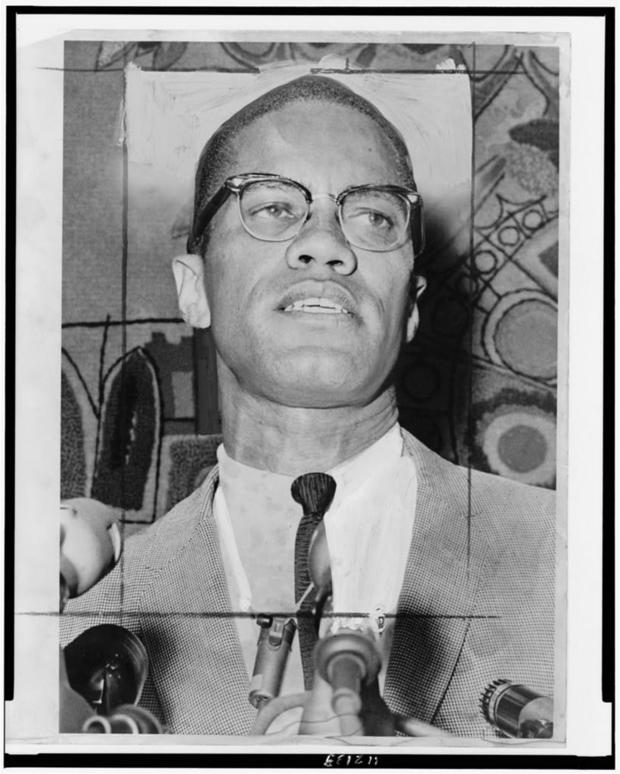The Assassination of Malcolm X in Photos: 50 Years Later
Malcolm X, born May 19, 1925 in Omaha, Nebraska as Malcolm Little and also known as El_Hajj Malik El-Shabazz, at a Queens, New York court, 1964.
The charismatic, but controversial black militant leader, converted to the black muslim religious movement, the Nation of Islam, which preached black self-reliance and a return of the African diaspora to Africa, while in prison. He repudiated the movement and embraced Sunni Islam in 1964. He continued to embrace Pan-Africanism, black self-defense and black self-determination, but disavowed racism.
Almost a year later, he was assassinated at the age of 39 by three members of the Nation of Islam.
These rare photos and government documents chronicle the assassination of Malcolm X on February 21,1965.
Front Page News
New York Daily News front page headline February 22, 1965 reads: "MALCOLM X MURDERED Gunned Down at Rally. Malcolm X, 30, is carried from Audubon Ballroom, 166th St. and Broadway, after he was shot while addressing a rally of his followers yesterday afternoon. He was declared dead at the Vanderbilt Clinic of Columbia-Presbyterian Medical Center within 15 minutes of the attack. Two men were taken by force from a howling mob of Malcolm's followers who were pummeling them on the street after the assassination. The slim Negro leader had been charging the Black Muslims with plotting to kill him ever since he defected from the group a year ago. "
Mortally Wounded
Followers tend to Malcolm X as he lies mortally wounded on the stage of the Audubon Ballroom in New York City, February 21, 1965.
Malcom X was shot 15 times at point blank range.
Crime Scene Photo
The Audubon Ballroom stage after the assassination.
Malcolm X was standing at the podium in the background addressing a rally when he was shot.
All three gunmen were convicted in March 1966 and sentenced to life in prison.
Crime Scene Photo
Bullet holes in back of stage where Malcom X was shot.
FBI Files
Detail from the summary of the FBI investigation into Malcolm X's assassination, February 22, 1965.
FBI Files
FBI file, dated February 24, 1965, documenting an eyewitness account of Malcolm X assassination.
Hospital Report
Detail from Medical Examiner's report from Presbyterian Hospital, February 21, 1965.
Crime Scene Photo
Arrow shows blood stain on stage of Audubon Ballroom where Malcolm X was shot.
Thomas Hagan
Police Sgt. Alvin Aronoff (L) grips hands of 22-Year-Old Thomas Hagan, also known as Talmadge Hayer, in the emergency room of Jewish Hospital in New York City, February 21, 1965.
Hagan, one of the gunmen, was wounded at the Audubon Ballroom where Malcolm X was assassinated earlier in the day. Hagan was beaten by the crowd before police arrived. Police, who took Hagan into custody, said he had a pistol with four unused bullets.
Witnesses at the scene identified Nation members Norman 3x Butler and Thomas 15X Johnson, but Hagan refused to confirm the identities of the other gunmen. All three men were convicted in March 1966 and sentenced to life in prison. Johnson and Butler maintained their innocence.
The Audubon Ballroom
The Audubon Ballroom in upper Harlem in New York City after it was roped off by police following the assassination of Malcolm X, February 21, 1965.
The Audubon Ballroom
The Audubon Ballroom in upper Harlem in New York City, after it was roped off by police following the assassination of Malcolm X.
Unity Funeral Home
Crowds outside of Unity Funeral Home, where the body of Malcolm X lies in repose.
The public viewing was attended by 14,000-30,000 mourners.
Unity Funeral Home
Policeman maintains watch from roof of Unity Funeral Home.
Malcolm X's Funeral
Malcolm X's widow, Betty Shabazz, takes a last look at the body of her husband before the casket is closed after funeral services at the Faith Temple of God in Christ in New York's Harlem, February 27, 1965.
Loudspeakers carried the service to the overflow crowd outside the 1,000-seat church.
With Martin Luther King
Martin Luther King and Malcolm X waiting for press conference, 1964.
Malcolm X
Radical black activist Malcolm X.
Malcolm X experienced racism early on in life with his family's encounters with the Ku Klux Klan and white supremacists. His father, Earl Little, was most likely murdered by white supremacists after frequent death threats, but the police ruled his death a suicide.
Malcolm X
Malcolm X, the black Muslim leader; photographed in New York, March 5, 1964.
Malcolm X
Malcolm X being interviewed by reporters, 1964.
Mug Shot
Police mug shot of future black activist Malcolm X, known as Malcolm Little from 72 Dale St., Roxbury, MA.
While in prison for larceny and breaking and entering, he became a member of the Nation of Islam. After his parole in 1952 he rose to become one of the Nation of Islam's most influential leaders.
With Fidel Castro
A 1960 photograph of a meeting in Harlem with Fidel Castro and Malcolm X.
Malcolm X
Malcolm X, 1964.
Malcolm X has often been described as one of the most influential African Americans in history. He's credited with the spread of Islam in the black community in America.
Published shortly after his death, The Autobiography of Malcolm X, cemented his legacy as a civil rights hero. The book was named one of the ten most influential nonfiction books of the 20th century by Time in 1998.
